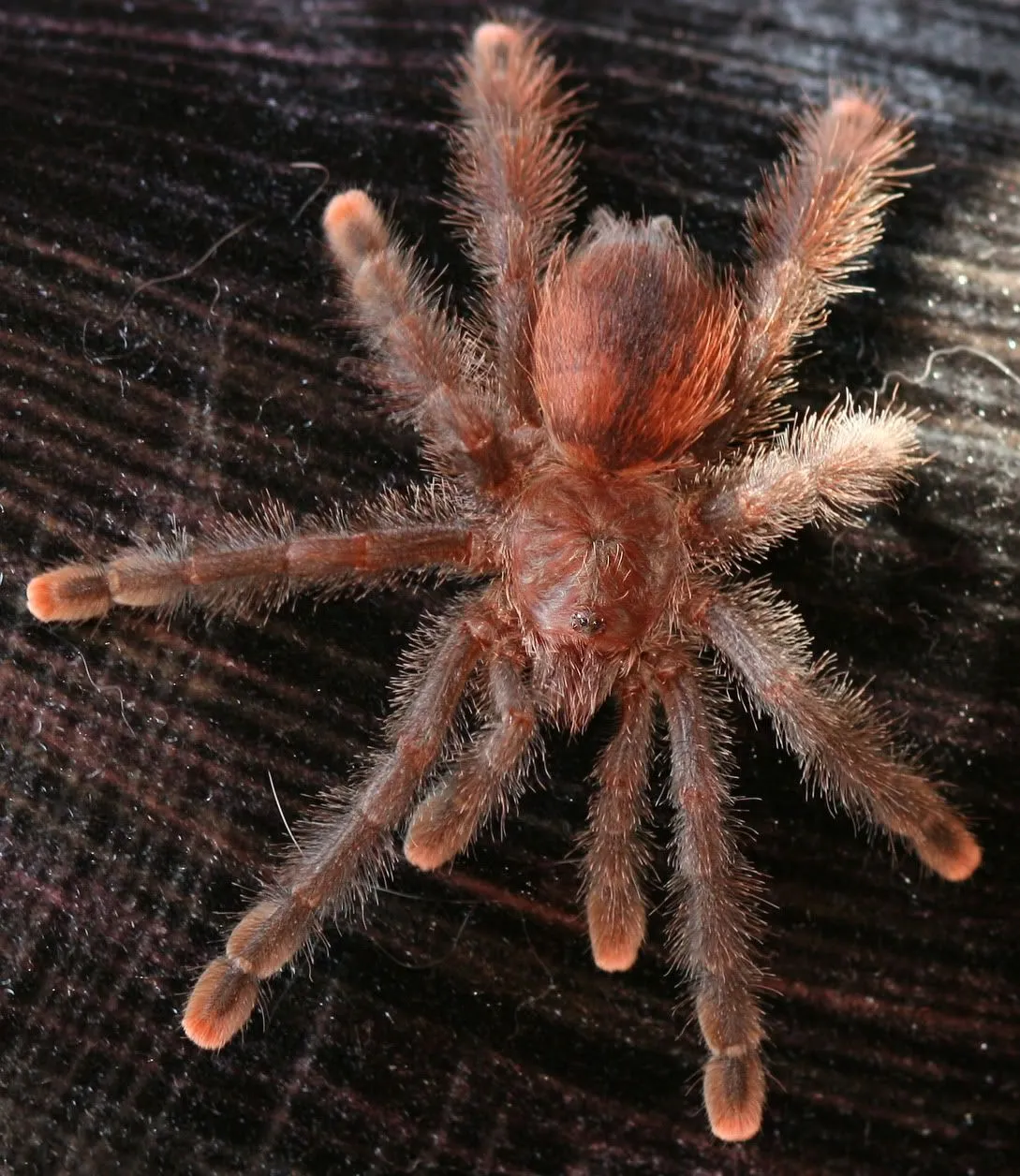Pink Toe Tarantula Food What You Need to Know
Caring for a Pink Toe Tarantula, or Avicularia avicularia, involves several key aspects, and a crucial one is their diet. Providing the right pink toe tarantula food is essential for their health, growth, and overall well-being. These arboreal tarantulas, native to the tropical rainforests of South America, are fascinating creatures, and understanding their dietary needs is a fundamental part of responsible pet ownership. This guide will delve into the best food choices, feeding practices, and things to avoid to ensure your Pink Toe Tarantula thrives. Correct nutrition will not only extend their lifespan but also help maintain their vibrant colors and energetic behavior. Let’s explore the dietary requirements of these beautiful arachnids to keep them healthy and happy.
Why Proper Pink Toe Tarantula Food Matters
The diet of a Pink Toe Tarantula directly impacts its health, growth rate, and lifespan. A balanced diet provides essential nutrients, vitamins, and minerals, crucial for molting, muscle development, and overall vitality. Poor nutrition can lead to stunted growth, weakened immune systems, and increased susceptibility to diseases. A malnourished tarantula may also exhibit lethargy and a lack of the vibrant colors that are characteristic of healthy Pink Toe Tarantulas. Offering a varied and appropriate diet ensures that your pet receives all the necessary components to flourish in captivity. Proper feeding habits also contribute to the tarantula’s ability to successfully molt, a process vital for growth and shedding parasites.
Understanding the Nutritional Needs
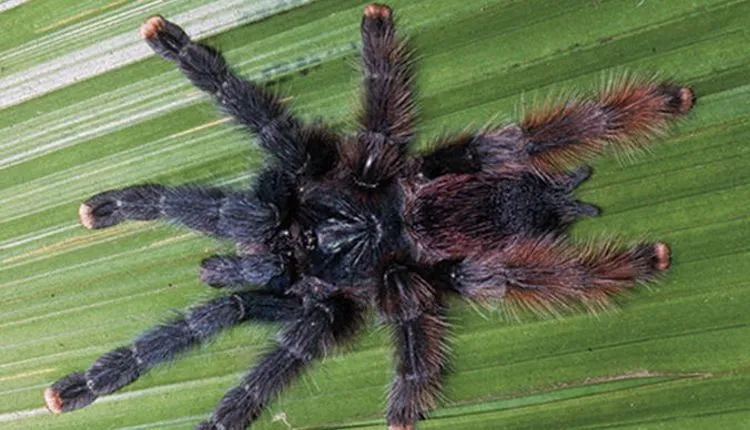
Pink Toe Tarantulas are primarily insectivores, meaning their diet consists mainly of insects. In the wild, they feed on a variety of insects, as well as occasionally small vertebrates. In captivity, a varied diet of appropriately sized insects is key. These tarantulas require protein, carbohydrates, fats, vitamins, and minerals for optimal health. Protein is essential for growth and muscle development, while fats provide energy. Vitamins and minerals support various bodily functions, including the molting process and immune system. The insects you choose to feed your tarantula should ideally be gut-loaded with nutritious food before being offered to the tarantula, thus enriching their nutritional value.
Top 7 Food Choices for Pink Toe Tarantulas
Choosing the right food items is vital for a Pink Toe Tarantula’s health. Here are some of the best food choices to include in your Pink Toe Tarantula’s diet, ensuring they get a balanced and nutritious meal.
Crickets
Crickets are a staple food for many pet tarantulas. They are readily available at most pet stores and are relatively easy to care for. The size of the crickets should match the size of your tarantula; generally, the insect should be no larger than the tarantula’s body. Crickets provide a good source of protein, making them a suitable choice for a growing tarantula. Gut-loading the crickets with nutritious food, such as vegetables and commercial cricket feed, before offering them to your tarantula will significantly increase their nutritional value.
Nutritional Value and Benefits
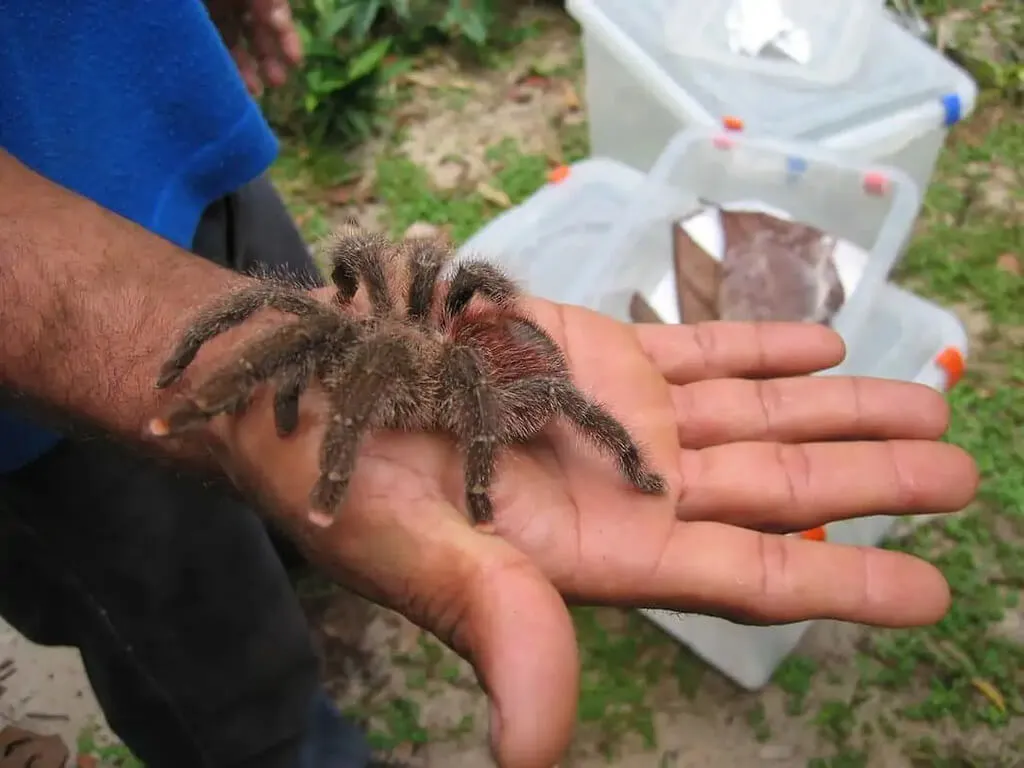
Crickets are rich in protein and chitin, an important structural component for tarantulas. They also contain essential amino acids necessary for growth and development. When gut-loaded, crickets can provide vitamins and minerals, contributing to a balanced diet. Crickets are a readily available and affordable food source.
How to Feed Crickets Safely
Remove any uneaten crickets after feeding to prevent them from stressing your tarantula or potentially harming it during molting. Always ensure that the crickets are from a reputable source to minimize the risk of parasites or diseases. You can offer crickets individually using tongs to avoid them escaping and potentially hiding in the enclosure. Regular monitoring of your tarantula’s feeding habits will help you adjust the frequency and quantity of cricket feedings.
Mealworms
Mealworms are another commonly used food source for tarantulas. They are relatively easy to store and breed, making them a convenient option. Mealworms are the larval stage of the darkling beetle. Ensure the mealworms are of an appropriate size for your tarantula to consume. Mealworms are a good source of protein and are readily accepted by many tarantula species. They are also a good option if you have a smaller tarantula, as they come in various sizes.
Nutritional Value and Benefits
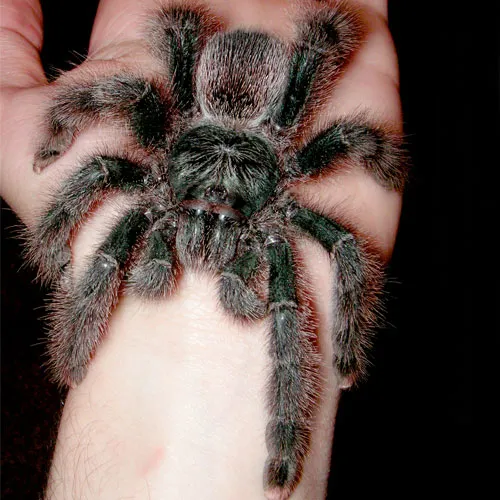
Mealworms are rich in protein and have a higher fat content compared to crickets. This can be beneficial for tarantulas, particularly those that need more energy. However, due to the higher fat content, they should be fed in moderation. Mealworms can provide a significant amount of protein, essential for growth and overall health.
How to Feed Mealworms
Feed mealworms individually to avoid having them burrow into the substrate. Watch your tarantula while it eats to ensure it is successful in capturing the mealworm. Some tarantulas may not readily accept mealworms, so introducing a few to see if your tarantula is interested is a good approach. Overfeeding mealworms can lead to excess fat accumulation, so moderation is important. Mealworms can be kept alive for a period of time, allowing you to store them and feed them when necessary.
Roaches
Roaches, such as Dubia roaches, are an excellent food source for tarantulas. They are highly nutritious, with a good protein-to-fat ratio. Roaches are also easier to keep than crickets, being less prone to escaping and producing less odor. They are hardy and live longer than many other feeder insects. Roaches are becoming an increasingly popular choice among tarantula keepers due to their nutritional value and ease of care.
Nutritional Value and Benefits
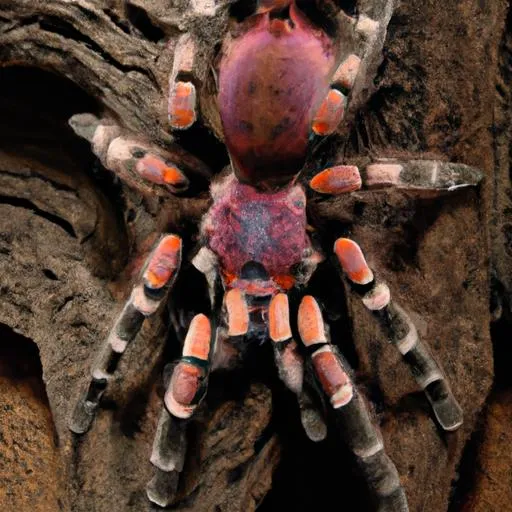
Roaches are packed with protein and have a balanced nutritional profile. They are rich in essential amino acids and minerals. Due to their relatively lean body composition, they provide a balanced diet without excessive fat. Roaches are also easy to gut-load, increasing their nutritional value further.
How to Feed Roaches
Offer roaches that are appropriately sized for your tarantula. Roaches are generally easy for tarantulas to capture and consume. Ensure that the roaches are from a reputable source to avoid any potential diseases. If your tarantula is in premolt, consider removing the roaches shortly after feeding, as they might disturb the tarantula while it is molting. Keep a close eye on the roaches to prevent any from escaping in the enclosure.
Locusts
Locusts are another excellent food choice, especially for larger tarantulas. They are a good source of protein and provide a varied diet. They are less readily available compared to crickets and mealworms, and may require special care to maintain. Locusts should be gut-loaded before feeding to increase their nutritional value.
Nutritional Value and Benefits
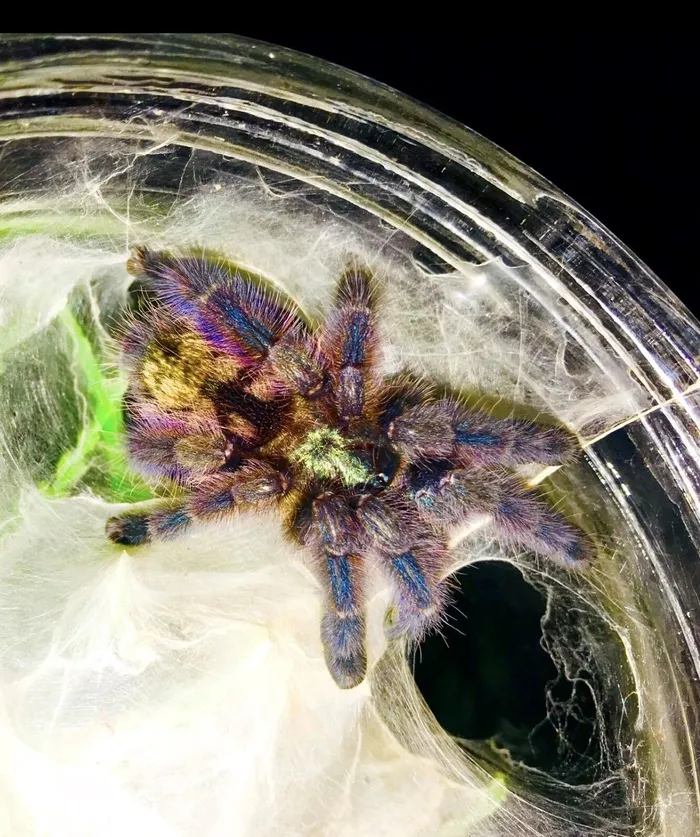
Locusts are high in protein and relatively low in fat, making them a healthy option. They contain a good balance of essential nutrients. Locusts are often a preferred food choice due to their larger size and appealing movement, which can stimulate a tarantula’s hunting instincts.
How to Feed Locusts
Locusts can be offered in a similar manner to crickets and roaches, but care must be taken due to their size and hopping ability. Ensure locusts are the right size for your tarantula. Remove uneaten locusts after feeding to prevent them from bothering the tarantula. Monitor your tarantula’s feeding behavior to ensure it is capturing and eating the locusts effectively. If locusts are too large, the tarantula may not be able to consume them, and they may stress the tarantula.
Waxworms
Waxworms can be offered as a treat due to their high-fat content. They should not be a staple part of the diet but can be given occasionally. Waxworms provide energy and can be a good option for tarantulas that are underweight or need extra calories. They are available at most pet stores and are easy to handle.
Nutritional Value and Benefits
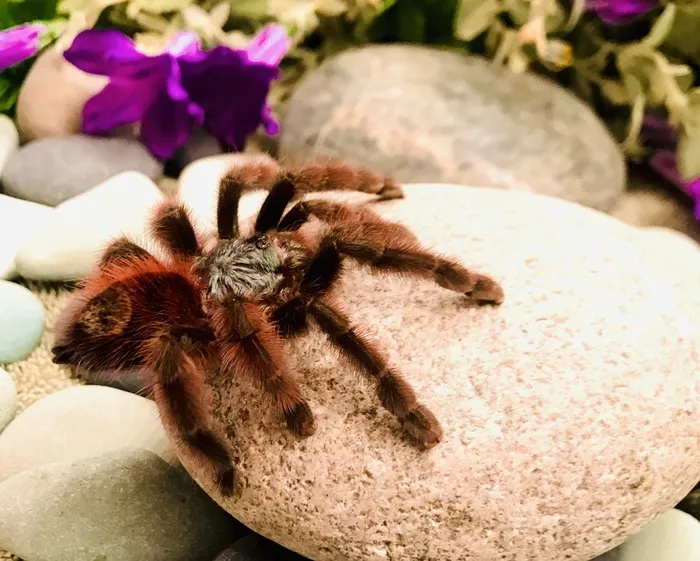
Waxworms are very high in fat, providing a quick energy boost. They contain some protein but are primarily valued for their fat content. They can be useful for tarantulas that are underweight or in need of extra calories. Waxworms should be given sparingly due to their high fat content.
How to Feed Waxworms
Waxworms are best given as a treat, once or twice a month. Offer one or two waxworms at a time. Watch your tarantula while it eats to ensure it captures and consumes the waxworms properly. Do not overfeed waxworms, as this can lead to excessive weight gain.
Fruit Flies
Fruit flies, particularly flightless varieties, are an excellent food source for spiderlings and small tarantulas. They are easy to breed and maintain, making them a convenient option for owners of young tarantulas. Fruit flies provide a small, easily manageable meal for young tarantulas that cannot handle larger prey. They are rich in essential nutrients, making them ideal for growth. They also stimulate the natural hunting behavior of the tarantula.
Nutritional Value and Benefits
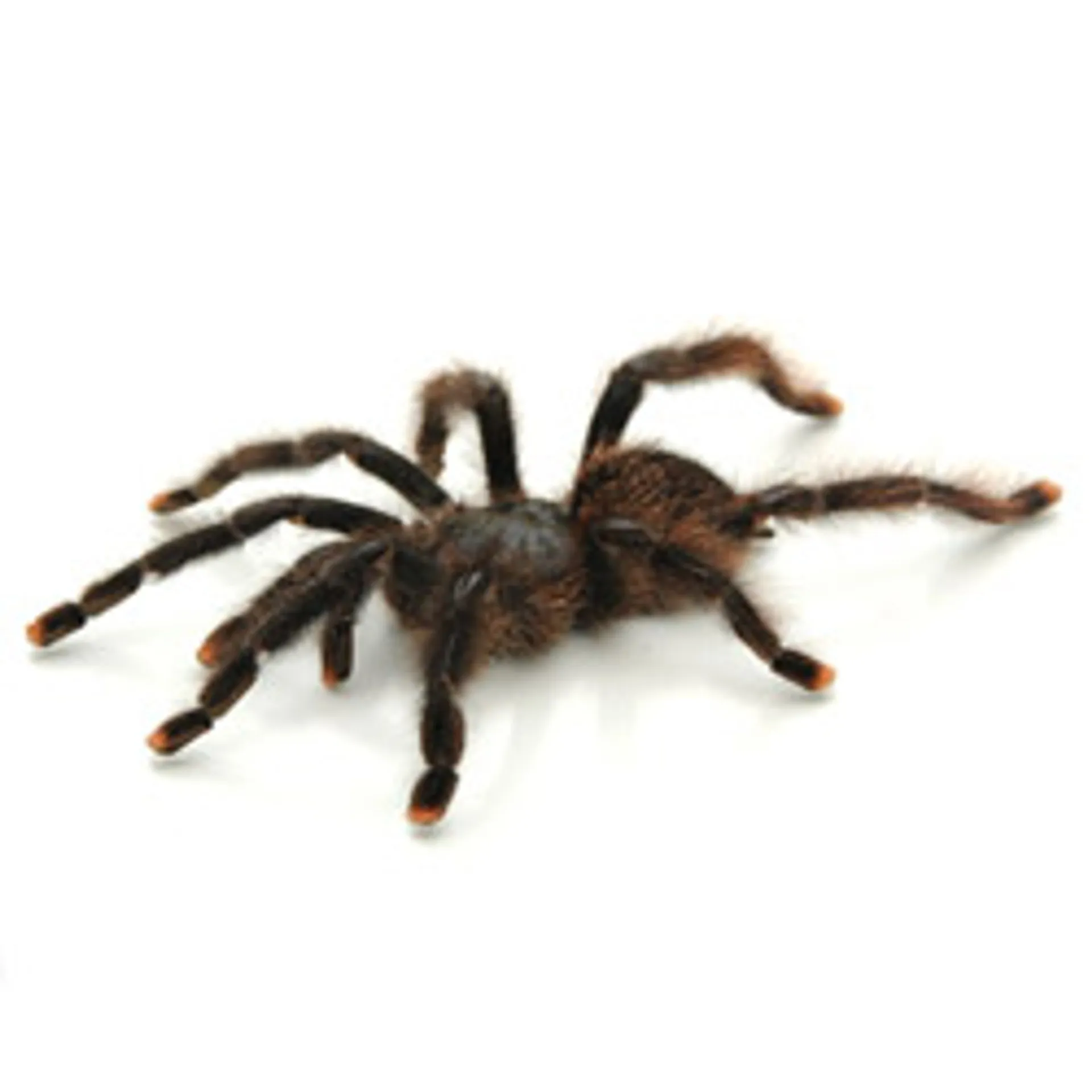
Fruit flies offer a good source of protein and other essential nutrients for tarantula spiderlings. They are small and easily digestible, ideal for delicate tarantulas. They are rich in amino acids, which are necessary for building protein and tissues, supporting overall growth.
How to Feed Fruit Flies
Use a small container or enclosure to feed fruit flies to your spiderlings. Provide the flightless fruit flies directly into the enclosure. Offer fruit flies a few times a week, depending on the spiderling’s size and growth rate. Ensure that there is no excess fruit fly remains left, as these can cause mold growth.
Pink Toe Tarantula Food
Beyond the food itself, other aspects of the tarantula’s diet are important to consider for optimal health and wellbeing.
Supplementing the Diet
While a varied diet of insects is generally sufficient, supplementing your tarantula’s diet with certain vitamins and minerals can be beneficial. Supplements can enhance the nutritional value of the insects, ensuring that your tarantula receives all the necessary nutrients for optimal health. Supplements are particularly useful during molting, when nutritional demands are higher. Vitamin and mineral supplements can be added to the food or dusted onto the insects before feeding.
Essential Vitamins and Minerals
Calcium and vitamin D3 are important for exoskeleton development and overall health. Multivitamin supplements can also be beneficial. These supplements can be dusted onto the insects before feeding to ensure the tarantula consumes them. Always follow the manufacturer’s instructions when using supplements, as over-supplementation can be harmful. Offering a varied diet with gut-loaded insects can often provide adequate levels of essential vitamins and minerals.
Gut-Loading Insects
Gut-loading involves feeding the insects a nutritious diet before offering them to your tarantula. This practice significantly enhances the nutritional value of the insects, passing on essential vitamins and minerals to your tarantula. Use commercial cricket feed or provide fresh vegetables, fruits, and grains to the insects before feeding them to your tarantula. The gut-loading process should begin at least 24 hours before feeding. This enriches the insects with vitamins and nutrients, enhancing the health benefits to the tarantula. A well-nourished insect becomes a superfood for your Pink Toe Tarantula.
Feeding Schedule and Frequency
The feeding schedule for a Pink Toe Tarantula depends on its age and size. Spiderlings require more frequent feedings, while adult tarantulas can be fed less often. Adjust the feeding schedule based on your tarantula’s body condition and eating habits. It’s important to find a feeding schedule that meets the individual needs of your Pink Toe Tarantula.
Feeding Young Tarantulas
Spiderlings and juvenile tarantulas should be fed more frequently, typically every other day or every three days. Provide appropriately sized prey, such as flightless fruit flies or small crickets. Monitor their growth and adjust the feeding frequency accordingly. Ensure the prey is small enough for the tarantula to catch and consume. Young tarantulas require a consistent supply of nutrients to support rapid growth during this stage. This is the time they are most vulnerable, so ensuring proper feeding is critical.
Feeding Adult Tarantulas
Adult Pink Toe Tarantulas can be fed less frequently, often once a week or every two weeks. Offer larger prey items such as crickets, roaches, or locusts. Adjust the feeding schedule based on your tarantula’s body condition and appetite. Observe your tarantula’s abdomen; it should be plump but not overly distended. Overfeeding can lead to health problems, so it’s important to avoid excessive feeding. Monitor the tarantula’s behavior and adjust the frequency as needed to maintain its health.
Things to Avoid Feeding Your Pink Toe Tarantula
While a varied diet of insects is ideal, there are certain foods and substances that should be strictly avoided to ensure the health and safety of your Pink Toe Tarantula.
Toxic Foods and Substances
Avoid feeding your tarantula any insects collected from the wild, as they may be contaminated with pesticides or parasites. Do not offer any vertebrates, such as mice or lizards, unless specifically advised by a reptile veterinarian. Never feed your tarantula processed foods, such as dog or cat food. Avoid offering any human food to your tarantula. Ensure that the enclosure is free from any toxic substances.
Overfeeding Risks
Overfeeding can lead to obesity and health problems, such as difficulty molting. Carefully monitor your tarantula’s abdomen size; it should be plump but not excessively large. Adjust the feeding frequency and the size of the prey if you observe your tarantula becoming too plump. If the tarantula is not eating, do not force-feed it. Always provide a balanced diet in appropriate amounts to support the overall health and wellbeing of your tarantula.
Creating a Healthy Feeding Environment
A healthy feeding environment is crucial for your Pink Toe Tarantula’s overall wellbeing. Proper environmental conditions contribute to a successful feeding experience and ensure your tarantula’s comfort and health. A suitable environment helps prevent stress and ensures the tarantula can eat in a safe and comfortable manner.
Maintaining Proper Humidity and Temperature
Pink Toe Tarantulas thrive in a humid environment. Maintain a humidity level of 70-80% and a temperature between 75-85°F (24-29°C). Provide a shallow water dish for drinking, and mist the enclosure regularly to maintain humidity. Inadequate humidity or extreme temperatures can lead to health problems, including difficulty molting. Regular monitoring of the enclosure’s temperature and humidity is essential for your tarantula’s well-being.
Cleaning the Feeding Area
Remove uneaten food and waste regularly to prevent the growth of mold and bacteria. Clean the enclosure weekly, replacing the substrate and cleaning the enclosure’s sides. Ensure the water dish is clean and filled with fresh water. A clean environment reduces the risk of disease and parasites. Regular cleaning and maintenance will also make feeding your tarantula a more pleasant experience. Good hygiene practices help maintain the tarantula’s health and longevity.
Conclusion
Providing the right pink toe tarantula food is fundamental to keeping your pet healthy and happy. By offering a varied diet of appropriately sized insects, understanding the nutritional needs, and avoiding harmful substances, you can ensure your Pink Toe Tarantula thrives. Remember to monitor your tarantula’s feeding habits, adjust the feeding schedule as needed, and maintain a clean and comfortable environment. With the right care, your Pink Toe Tarantula can live a long, healthy, and vibrant life, bringing you years of enjoyment. Prioritize providing a balanced and nutritious diet for your Pink Toe Tarantula, and enjoy the unique experience of caring for these beautiful creatures.
